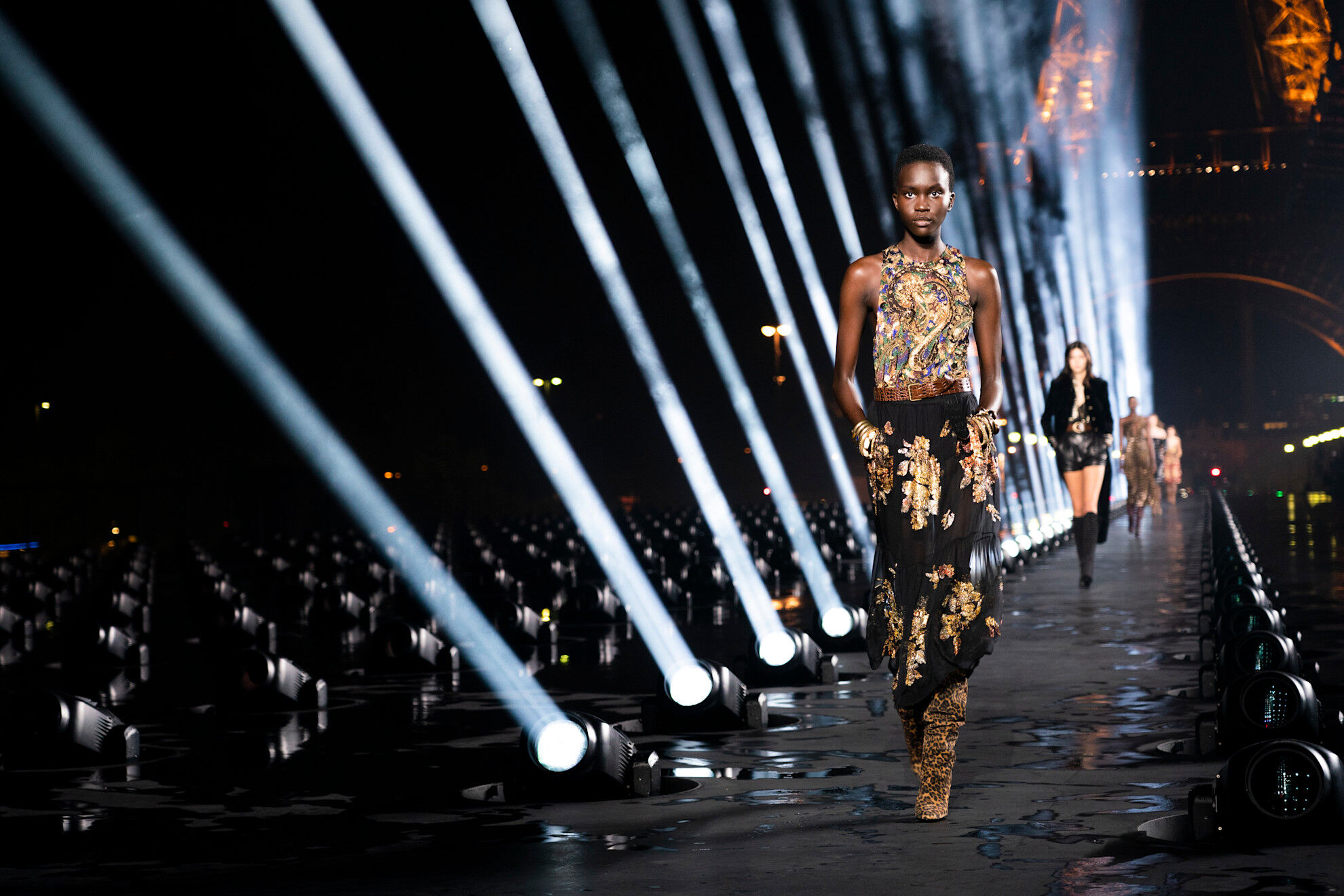Yves Saint Laurent: on the designer’s birthday
The iconic name

French fashion designer Yves Saint Laurent was born in the Algerian city of Oran. On August 1, 1936, he became the firstborn in a family whose father owned a chain of cinemas in Morocco, Tunisia, and Algeria, and whose mother was a sophisticated socialite.
He made his mark in the fashion world in the late 1950s, but it all started with a passion for theater and opera. Yves created outfits for dolls and set designs, staging performances for his younger sisters, Michèle and Brigitte. The works of Christian Bérard and the paintings of Henri Matisse, Diego Velázquez, and Édouard Manet played a significant role in shaping his artistic vision.
Yves needed to prepare three black-and-white sketches—a suit, a coat, and a dress—for a competition he read about in Paris Match magazine. Certainly, he decided to participate, attaching fabric samples to his sketches and earning third place.
Without hesitation, in 1953, Yves Saint Laurent traveled to Paris to take drawing courses “from couture.” He had long dreamed of this trip and even memorized the routes so he could navigate the city without a map.

ФОТО: SPOTLIGHT / Saint Laurent
Yves’s sketches resembled the work of Christian Dior, whom he had the chance to meet thanks to Michel de Brunhoff—the editor-in-chief of French Vogue, who noticed Yves during the competition and later received a letter from Saint Laurent’s father, reminding him of his son.
Christian Dior, upon seeing the work of the 18-year-old, hired him as an assistant in his studio. In 1957, Yves became Dior’s personal assistant, allowed to design outfits for upcoming collections. That same year, Christian Dior passed away suddenly from a heart attack. His successor, the 21-year-old Yves Saint Laurent, took over as the director of the fashion house.
Yves simplified silhouettes, drawing inspiration from the clothing he saw on people in the streets. He created only six collections in two years and left Dior not by choice, but while in a hospital due to a nervous breakdown.
From that moment, Yves Saint Laurent’s life changed dramatically. His friend Pierre Bergé promised to build a couture house together, starting from scratch. Pierre managed the business, Yves created, and they secured part of their startup capital by suing Dior, with the other half invested by businessman and philanthropist Mack Robinson.
On January 29, 1962, Yves Saint Laurent presented his first collection at 30 bis Rue Spontini in Paris’s 16th arrondissement. It took the designer three years to create something entirely new. Such a "miracle" in Yves’s creative journey was the fall-winter 1965 collection, where classic couture looks intertwined with short cocktail dresses inspired by Mondrian. These looks were designed for the new woman—bold, youthful in every sense, and mobile.
The designer wanted to showcase not only beauty and elegance but also strength. Thus, in the fall-winter 1966 collection, Yves Saint Laurent introduced the legendary Le Smoking. For the first time, tuxedos were tailored to the female form. Initially, critics did not accept Le Smoking, but Yves was supported by famous friends and loyal clients.

Photo: SPOTLIGHT / Saint Laurent
Artists, who had been an inspiration from the start, accompanied Saint Laurent throughout his creative journey. Prints by Andy Warhol and Roy Lichtenstein adorned dresses, Van Gogh's irises and sunflowers bloomed on jackets, Fernand Léger’s simple shapes and Henri Matisse’s appliqués complemented each other, while Georges Braque’s white birds fluttered on bridal gowns.
Africa and the East always found their way into Yves Saint Laurent’s collections. He typically traveled to Morocco in December and June to create sketches for upcoming collections. The vibrant colors, people, and nature influenced his work.

Photo: SPOTLIGHT / Saint Laurent
In 1963, Pierre Bergé signed a contract with Charles of the Ritz to create perfumes under the YSL brand. The debut fragrance, Y, was released the following year. The most scandalous and successful fragrance became Opium. The controversies and sales bans due to its provocative slogans only fueled the success of Opium, a success that endures to this day.
In 1986, the brand began facing difficulties, which French President François Mitterrand helped to overcome. However, after he left office, the house’s challenges resurfaced. In 1999, Gucci Group acquired a controlling stake in the brand.
Up until 2002, both the house and Yves Saint Laurent himself struggled. The designer continued working only on the couture line but eventually withdrew from that as well. He gave his final bow and retreated into the shadow of his greatness. In 2008, at the age of 71, Yves Saint Laurent passed away.
His position was taken over by Stefano Pilati, who had not anticipated his appointment. He remained with the brand for eight years. Pilati made the silhouettes more feminine, softened the lines, and added volume. In 2012, Hedi Slimane became the creative director, not for the first time—he had previously worked on the brand’s men’s collections from 1997 to 2000, creating a new silhouette for men.

Photo: SPOTLIGHT / Saint Laurent
Upon taking the role of creative director, Slimane removed the founder’s name from the brand’s title: Yves Saint Laurent became Saint Laurent. He drew his inspiration not from Paris, but from Los Angeles.
The Saint Laurent woman’s image became bold, sexy, and youthful. In 2016, Slimane left the position of creative director, passing the baton to Anthony Vaccarello, who continues to lead to this day.
Modern women can thank Yves Saint Laurent for bringing elements of men’s wardrobes into female silhouettes, high boots, and tuxedos, which will forever remain part of fashion history.


